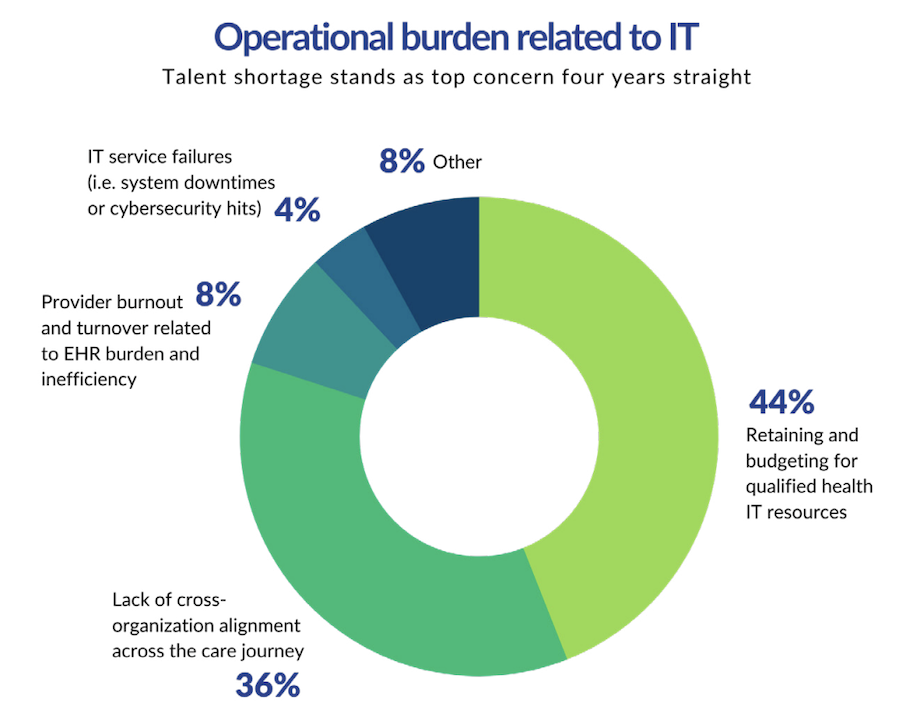Is There a Disconnect in IT Priorities for Patient Engagement?
The 11th Annual Health IT industry Outlook Survey Report from Stoltenberg Consulting provides key insights from hospital and health system CIOs. There was one area that really stood out as ripe for some analysis. Essentially, CIOs report that they are doubling down on existing investments in EHRs to solve problems like being understaffed and needing to address patient expectations while they also report that the EHR and overall lack of automation in many areas is driving burnout.
It’s an interesting dichotomy that we’ve seen in discussions and presentations across the industry this past year. According to the opening of this report from Stoltenberg Consulting, “Looming workforce and financial challenges make it difficult to balance a multitude of departmental priorities.” It goes on to say that, “For the fourth straight year, talent strain topped HIT operational obstacles. Nearly half of healthcare CIOs reported ‘retaining and budgeting for qualified IT resources’ as their greatest (44%) operational challenge related to IT.

To address this challenge, along with other challenges called out in the report, namely that they are “Facing growing pressure from consumer expectations, labor strain, and new market entrants,” CIOs are trying to maximize value from current IT investments.
Specially, “getting the most out of existing IT purchases, like the EHR or ERP system” ranked as the highest CIO priority for IT related financial goals with 56% in 2023. In a distant second, “driving down vendor support costs” received 28% of respondent votes. “Improving and sustaining the speed, accuracy, and value of financial reporting” (8%) ranked No. 3 for CIO goals. Trailing behind (each at 4%) were “facilitating value-based care reimbursement maximization” and “reducing claims denials and speeding up insurance and/or patient payments.” Made evident by consistent survey results, CIOs continue to do more with less, ensuring that IT strategies are both operationally and financially effective long-term. As seen in recent market reemergence of EHR system jumps and consolidation, hospital leaders are looking to their vendors to deliver clearer ROI, clinician satisfaction, and true partnership.
At the same time that they are focusing on getting more from their EHR solutions, they admit, “that end users are most frustrated with ‘inefficient system workflow and/or lack of automation’ (60%). This figure hit an all-time high in 2023, climbing 17% from last year’s top-spot amount of 43%. In second place, “issue and/or call wait times” grew 16% in votes from last year, now impacting 28% of hospital and health system end users in 2023. Lesser end-user concerns are “IT ticket resolution effectiveness” (8%) and “poor support analyst communication” (4%).”
Separate from this report, surveys of patients also report frustrations about lack of access to digital tools or poor performance of existing tools. One McKinsey study on patient engagement showed that few patients think existing mobile apps and websites from health care providers meet their needs.
The dissatisfaction felt by patients and healthcare staff is a clear indication that trying to use the EHR to solve every problem isn’t an effective strategy. Ultimately it isn’t likely to show ROI for areas where it lacks the consumer user interfaces and robust tools needed to engage patients. It makes sense to maximize the investment in the EHR for clinical purposes, but look to solve patient engagement with tools meant for that purpose that can drive the results to pay for themselves.


